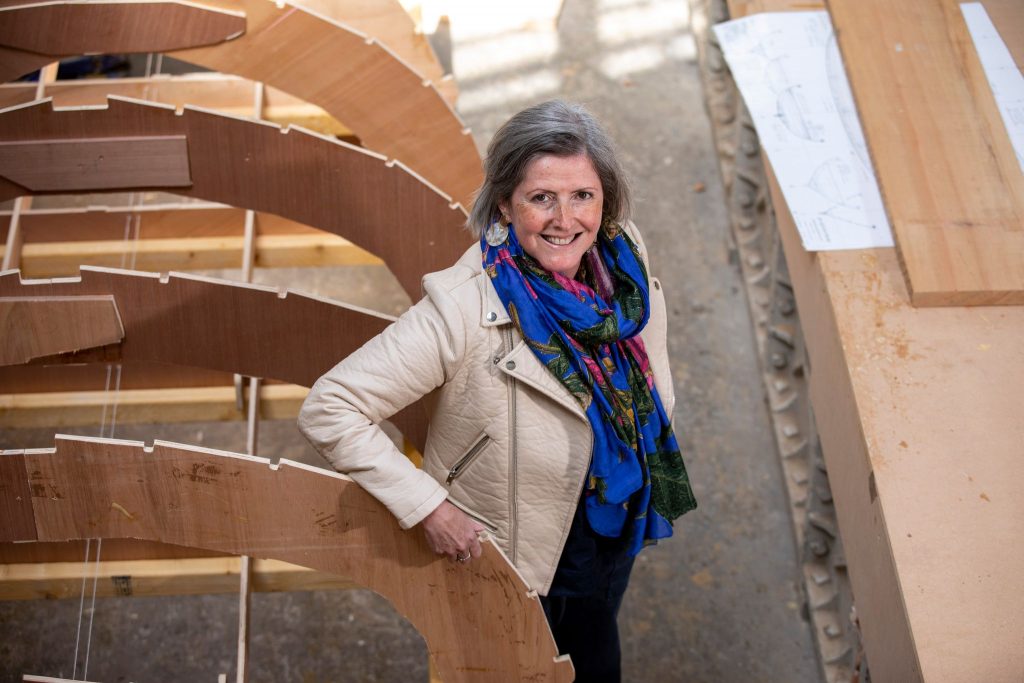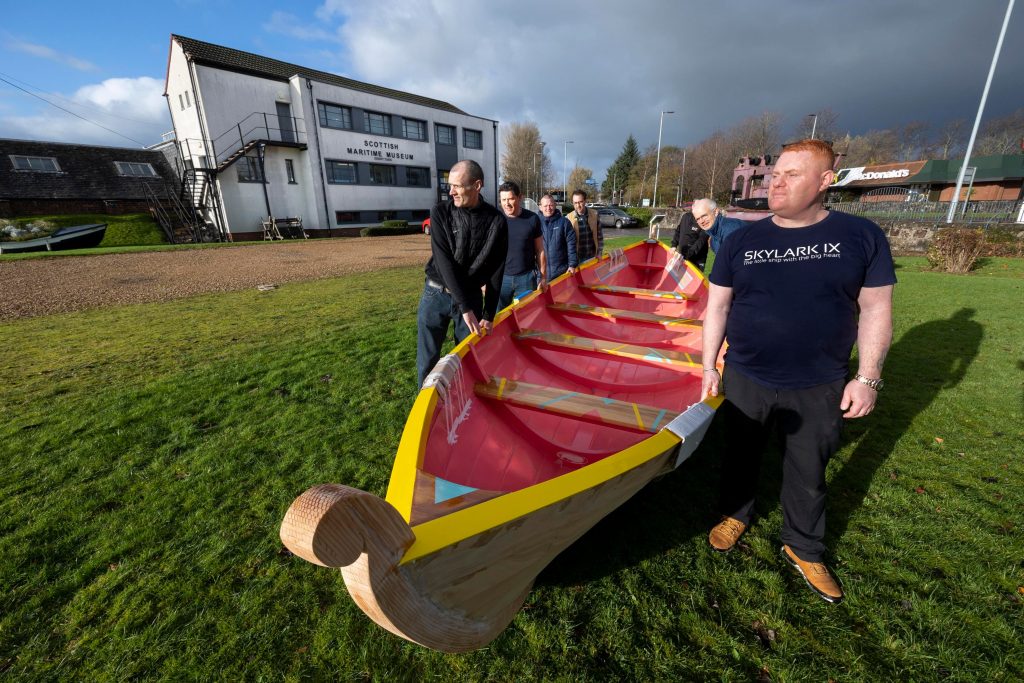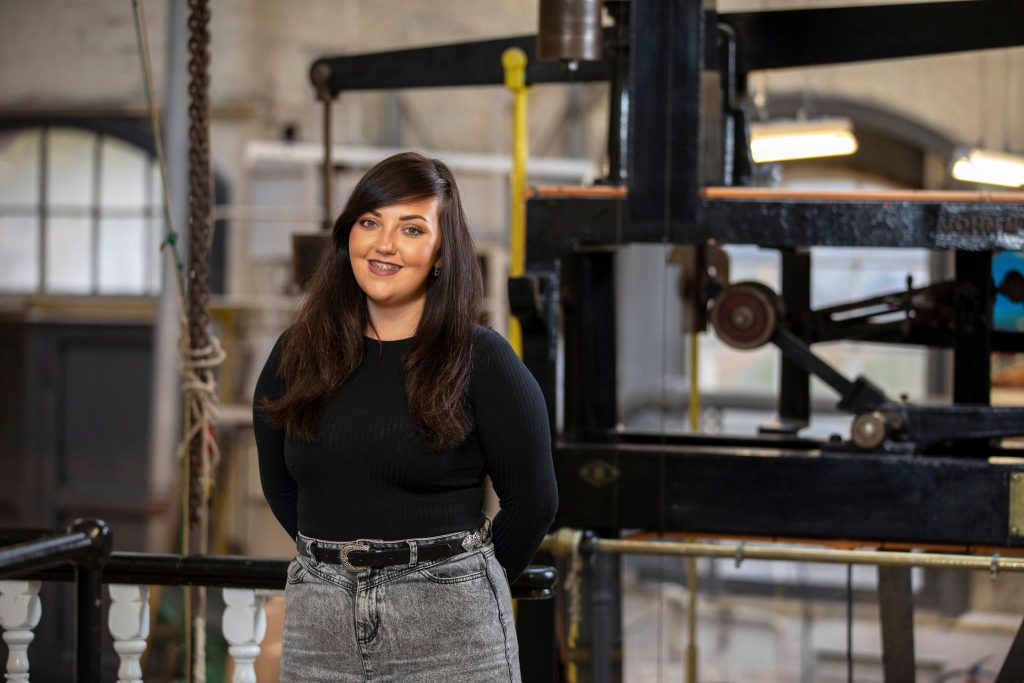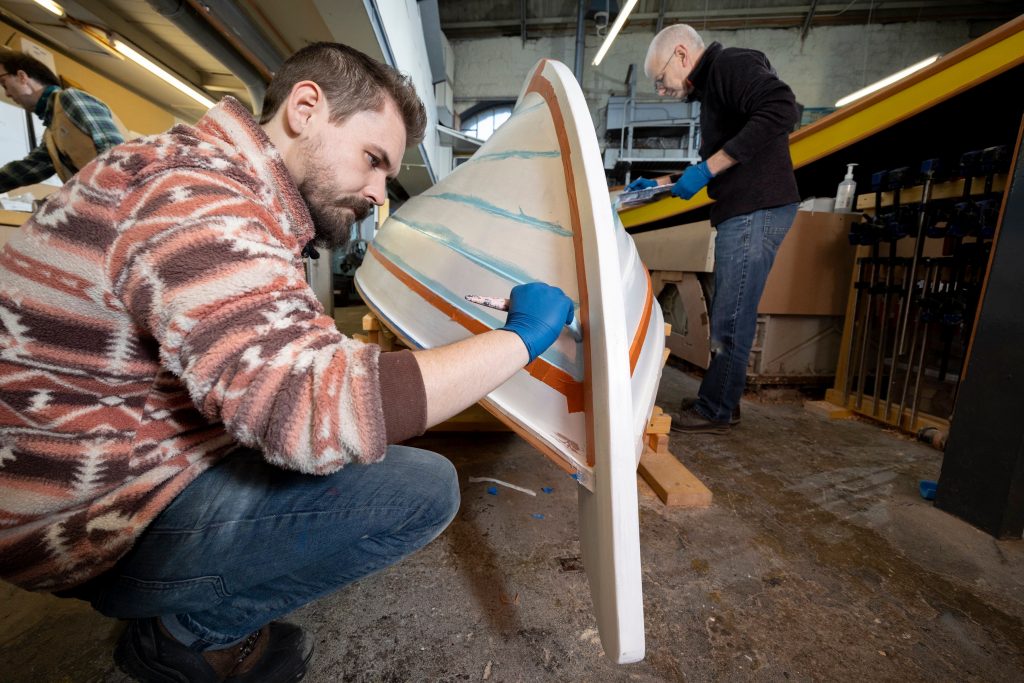How the restoration of Skylark XI helped to heal a community
After the battered wreck of Skylark IX was raised from its watery resting place in a sorry state of repair, the local community was galvanised into mounting a very special recovery mission. This was, after all, a boat credited with rescuing 600 men during the Dunkirk evacuation in 1940.
It was appropriate, then, that the salvage operation was led by Alternatives, a Dumbarton-based drugs rehabilitation charity, which planned to use the restored vessel as a figurehead for a project aimed at saving lives in the town.
With the boat in storage at the Scottish Maritime Museum’s premises at Irvine, and £400,000 secured from the National Lottery Heritage Fund, the Skylark IX Recovery Trust planned how to get the vessel shipshape and Bristol fashion again.

Claire McDade became project manager and looked to a local tradition to help both celebrate Skylark IX’s legacy and reach out to vulnerable people in Dumbarton.
“We recruited a boatbuilding tutor from the Archipelago Folkschool to teach our people in recovery how to build a 22-foot rowing skiff, based on an established template from the Scottish Fisheries Museum at Anstruther,” McDade says.
“The idea was to re-introduce traditional skills and a sense of ownership, using heritage as a tool to help rebuild broken lives. Skylark’s role in saving lives at Dunkirk really resonates with our people.”
Everything was going well until the day in March 2020 when everyone had to abandon ship and go into lockdown.
“The Alternatives recovery house was ‘bubble-wrapped’ with enough supplies to keep them going and staff moving in to take care of some very exposed people,” McDade says. Her trustees told her simply: “Make sure there’s a boat at the end of all this.”
“We obviously couldn’t meet in person so we talked on Zoom about doing everything possible to keep people alive,” McDade says. “It was as stark as that; there was no question we were carrying on, we just had to figure out how to proceed.”
The decision was taken to downsize the endeavour. “Via Zoom over the big screen in the recovery house, we could continue to teach the boatbuilding theory so we supplied clients with kits to build small-scale models of the boat,” McDade explains.
“In July 2020, we were able to take the replicas up to Loch Lomond where they all floated their wee boats. It was a joyous moment. Having such a focus through an obviously difficult time was wonderful.”
Eventually, the construction of the full-size skiff was resumed at the boat-building workshop in the Scottish Maritime Museum’s Denny Tank premises in Dumbarton. But during the second lockdown, in 2021, tragedy struck.
“One of our guys took a fatal overdose in the lockdown to Easter. He had been regularly attending sessions at the boat shed and said that carrying out the work as part of a team had really helped him.”
When contact was only through Zoom, however, he “fell off the wagon”. “It was so awful for everyone; we wore our Skylark IX crew T-shirts as we formed a socially distanced guard of honour at the funeral. That really brought home just how important the work is here.”
And the project faced further bad news when a naval architect was brought in to survey what was left of Skylark IX. “It turned out that the costs of trying to refloat her hadn’t been properly thought through and the whole idea was not viable,” McDade says. “Suddenly, I had to be the voice of doom telling the trustees that Skylark wasn’t worth repairing.

“They were devastated, given that they had put their hearts and souls into the restoration, which had been the original selling-point of the project. The decision was taken to not rebuild but to keep her as the wounded war hero she is, in the battered state she is, to show the life she has lived and tales she can tell.”
Skylark IX will eventually be brought “home” to the Scottish Maritime Museum in Dumbarton to be the centrepiece of a new interpretation centre, the Spirit of Skylark.
“We’ll tell stories of recovery and it will be a place for people to continue to learn new skills as well as a space for remembrance,” says McDade. And the trust’s community engagement continues.
“We welcome schoolchildren into the workshop and provide them with lunches and learning activities during the holidays. We’re also building links with local groups and the church; Skylark is most certainly like a cat with nine lives.”
With more than 25 years’ experience in the sector, McDade knows the difference museums and heritage can make to the wellbeing of their communities – providing everyone’s on board for the long haul.
“I think back to my time as an outreach and engagement curator in the north of England, when we gave cameras to people with alcohol issues for a photographic project, only to bugger off when it was done to focus on another group.
“They were short-term projects with nice outcomes and everyone was happy; when you work with people like our folk here, however, you have to keep making the effort.
“Love is not a word that’s used very often in a professional context but I’m on a mission to get it out there. You hear curators talk about their love of collections. But what about the love for people?”
Resilience through recovery
Jade West knows how warm hearts and helping hands can support individuals facing life’s sternest challenges. She has become widely recognised for her work at the Skylark IX Recovery Trust, where she works as community engagement lead.
West was one of eight “heritage heroes” whose images were projected on to Stonehenge to celebrate community champions. She joined colleagues telling personal stories of recovery in the Skylark edition of the National Lottery’s podcast, Amazing Starts Here.
West grew up in poverty among vulnerable families on Dumbarton’s Bellsmyre estate, and has suffered what she calls “bumps in the road” with alcohol, drugs and anxiety issues.

“I was quite a depressed, scared child and struggled to feel any sense of worth,” she says. “I remember very clearly coming off the school bus one day and seeing someone with knives hanging out of their stomach and thinking it was normal.
“There were people on the street hooked on heroin and I myself struggled with drugs and alcohol, not as an addict, but as the sort of thing you do when you are stuck in a flat with no work.”
Fortunately, West had help and encouragement from a series of mentors at church and at a youth club and in an early stint working at a Starbucks coffee shop.
“It was tough love,” she remembers. “I’d experienced toughness and I’d experienced love but I’d never had anybody helping me to see a different future.
“I knew that if I could get out of that existence I wanted to encourage people not to worry and be bold in asking for support when it was needed; I wanted to help people in the same way that I was given opportunities. That saved my life, really. I don’t think I’d otherwise be here, quite honestly.”
Via the local office of Skills Development Scotland, she learned about a community development course at the University of Glasgow. That stood her in good stead for Skylark IX which, she says, has a very innovative way of working with people.
“We make sure everything is tailored to individual needs and where a person is at in their life. They’re not just a number and we seriously value them, just as I feel valued as a member of staff.”
West helped put together the Skylark Stories exhibition, a celebration of the project’s progress, which was held at the Scottish Maritime Museum’s Denny Ship Model Experiment Tank in the town.
“Last year, one of our veterans passed away and I remember him saying to never let the story die. It’s so important to get young people on board, so our youth programme worked with a textile historian with a wartime ‘make do and mend’ ethos to create a patchwork quilt featuring scenes from the Skylark story.
“Older members of the community chipped in as well and it reflected the kind of collaboration that was key to the Dunkirk evacuations.”

In addition to therapeutic arts and heritage projects, social enterprises have sprung up around the workshop, while 10 volunteers have been trained to record the memories of veterans for a “living archive”.
“One former soldier who lives locally recalled being in Dover as a wee boy and seeing the Dunkirk boats come home. He’s in his nineties and it’s humbling to hear his story,” West says.
“Writing has always been an outlet for me to express emotions, either good or bad. Because I’ve seen it from the other side, I really recognise how important these opportunities are.”
Lockdown proved, however, that storms can blow up when you least expect it. “We all suffered, but people in recovery from addiction face challenges that we can’t begin to imagine,” West says.
“During lockdown, I lived on my own and was more depressed than I have ever been, but I had a job and a car. And I wasn’t fighting a disease every day – that takes resilience. There are so many parallels between Skylark and the people who are working with it. Our project is not just about recovery from addiction. It’s recovery from Covid, it’s recovery from mental health issues and isolation. People just need a place to be and a sense that they belong.”
John Holt is a freelance journalist
THE VOYAGES OF SKYLARK IX
- 1934 Skylark IX – one of 11 boats of that name – was built as a pleasure boat in Poole, Dorset, with the capacity for 115 passengers.
- 1940 During the second world war, Skylark IX was one of the small vessels requisitioned to transport soldiers from the Dunkirk beaches to larger ships in Operation Dynamo.
- 1955 Skylark IX moves to Scotland, where the vessel is used temporarily as an emergency ferry when the Forth Rail Bridge closes during a national rail strike.
- 1960s Skylark IX is a holiday favourite at Portobello Beach, Edinburgh, and is still fondly remembered. Until last year, the Skylark cafe and restaurant served food and drink – artisan breads and pastries a speciality – on the High Street. A rowing club was also established in her name.
- 1972 Skylark IX begins a new life as a cruiser on Loch Lomond.
- 1987 Skylark IX is recognised as a Dunkirk Little Ship by its wartime commander, who happened to be holidaying on the loch. Annual Remembrance events are held on the boat.
- 2000 Skylark IX takes veterans for a final journey on the 60th anniversary of the Dunkirk evacuation. The boat is withdrawn from service in 2005.
- 2010 Skylark IX sinks when it is damaged in an accident two days after the 70th anniversary of Dunkirk.
- 2012-present Skylark IX is brought to the surface; Alternatives West Dumbarton Community Drug Service joins forces with the Vale of Leven Remembrance Day Association and Leven Cruising Club to form the Skylark IX Recovery Trust with the aim of bringing the vessel back to life and helping vulnerable people in the community.